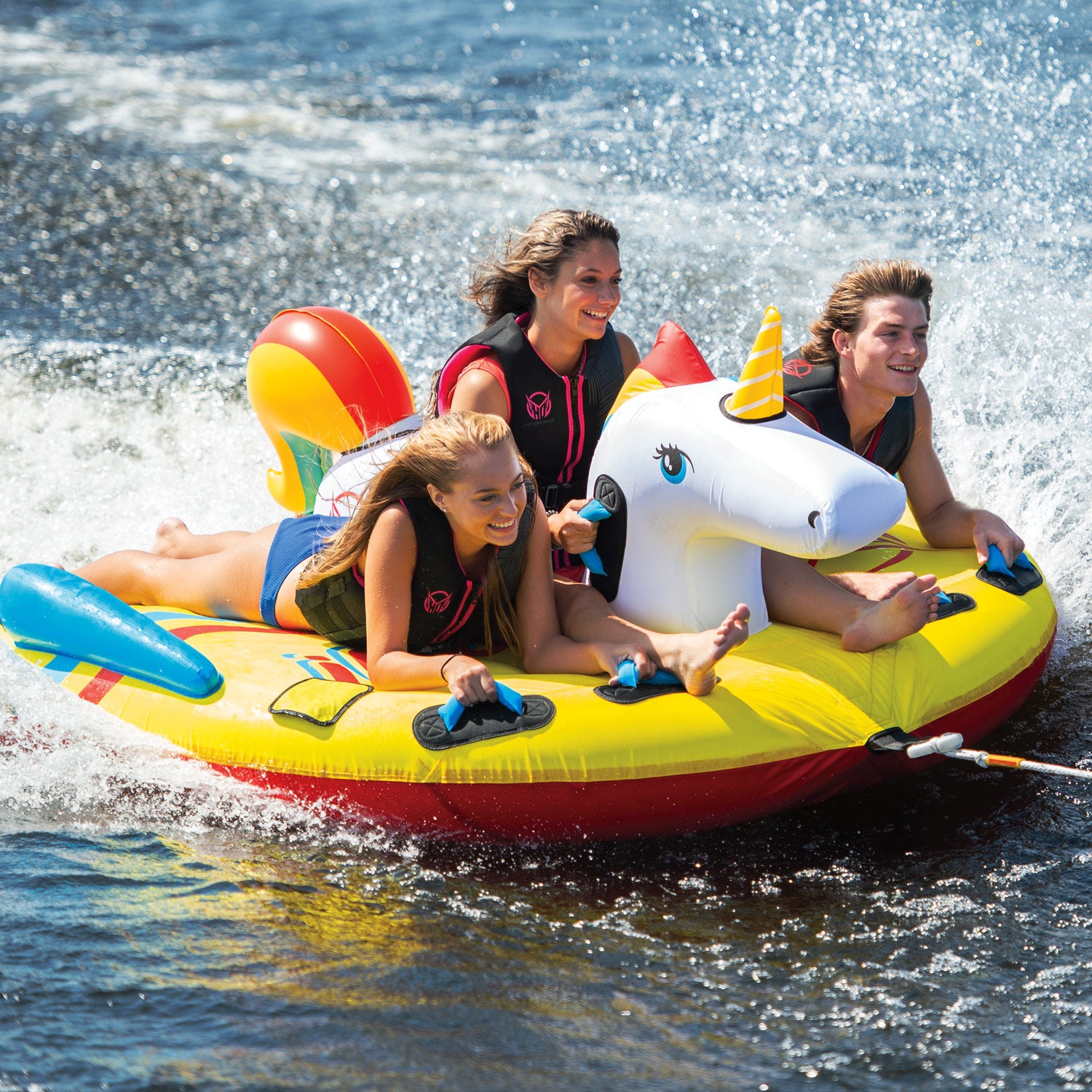Wakeskates are now a mainstream staple in the watersports world. They’re great for small boat wakes or jetskis and won’t make you faceplant! Wakeskates are really popular at the cable park too giving you a whole new challenge on obstacles. No matter what you’re riding behind there’s a skate out there for you so give it a go and discover a whole new way to have fun on the water.
SIZE
Like wakeboarding, your weight should determine which size wakeskate you need. Have a look at the table below for a rough guide.

Choose your skate size on ability level as well. A shorter skate is more maneuverable and easier to spin and flip while a longer skate will work better a lower speeds and give more stability for beginners. If you’re not sure or are sharing the skate around cater for the heaviest rider. You’re better off having a skate slightly too long than going too short.
DECK SHAPES & SURFACES
Wakeskates have no boots so you need a surface on top for your feet to grip too. Soft EVA foam is used on the wakeskate top deck so you can ride barefoot and are a bit safer on crashes. Grip tape similar to what is used on a traditional skateboard on a top deck gives you better grip and sticks the deck to your feet on ollies. Grip tape is pretty abrasive so you’ll need a pair of shoes to ride this kind of wakeskate.
There are three basic types of wakeskate:
STANDARD wakeskates usually have a flat top deck. These skates are great for learning or just to have on the boat for anyone to use.
CONCAVE skates have a better quality and concave deck like a real skateboard which holds your feet to the skate and reacts quicker for flip and spin tricks.
BI-LEVEL skates are the best if you want the most control and pop. The bottom deck gives you speed and control on the water while the flexible top deck sticks the board to your feet and creates huge pop off the flat water.

Wakeskates come with a centre fin for grip behind the boat but this is usually removed if you’re taking it to cable.
CONSTRUCTION
Most wakeskates are made of 9 ply timber coated in marine grade epoxy. Wood makes a flexible deck that gives you a springy skateboard feel on the water. Basic wood skates are lightweight but more advanced skates are much heavier. It might seem counter-intuitive but a heavier skate keeps its momentum in the air on tricks and better sticks to your feet on ollies. Some wakeskates incorporate composite materials into they’re construction. Compression-molded skates and bi-level bottom decks are stiffer and are made with more rocker so you’ll get pop more off the boat wake.
We hope this guide has helped you find the perfect wakeskate. If you have any questions please CONTACT our friendly sales staff.




